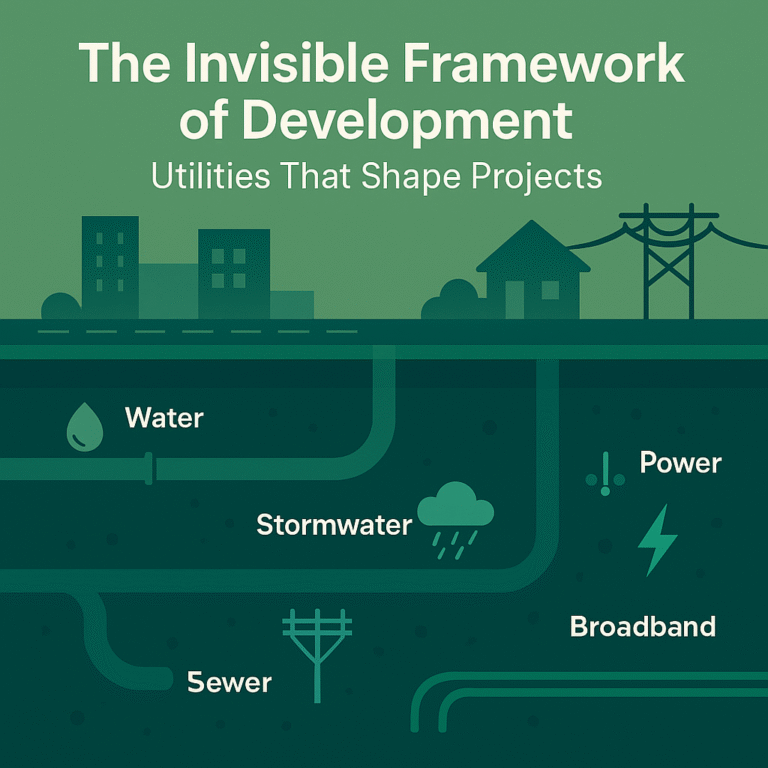Urban landscapes present a unique set of challenges when it comes to managing stormwater. Increasing impervious surfaces, higher density development, and the need for sustainable design solutions have made detention and retention basins critical components in both public and private projects. These basins do more than control runoff. When carefully designed, they can enhance the aesthetics of a site, support recreational and ecological functions, and provide long-term value for communities and developers.
Understanding Detention and Retention
Detention and retention basins serve similar goals but operate differently. A detention basin temporarily holds stormwater and releases it at a controlled rate. Its primary function is to prevent downstream flooding and manage peak flows during storm events. Retention basins, on the other hand, maintain a permanent pool of water. They serve not only stormwater management purposes but also water quality, habitat creation, and sometimes aesthetic functions within a site.
Recognizing the distinct purposes of each basin type is essential when planning a landscape that balances performance and value. Selecting the right type of basin requires an understanding of hydrology, site conditions, and community needs.
Planning and Space Considerations
Proper planning is the foundation of a successful detention or retention project. Site constraints, such as topography, soil types, and surrounding land use, directly influence the size and location of basins. Hydrological calculations, including runoff volumes and peak flow rates, help determine capacity requirements and ensure that basins perform as intended during storm events.
Designers also consider practical aspects such as maintenance access, safety, and connectivity to the surrounding landscape. Procedural checklists are invaluable in guiding these steps, covering permitting, adherence to local codes, and coordination with civil engineers. By approaching basin design methodically, landscape architects ensure that every element of the project supports both function and usability.
Integrating Value and Functionality
Detention and retention basins offer opportunities to integrate value beyond stormwater management. Thoughtful design can transform a utility feature into a community asset. Basins can be incorporated into parks, trails, and green corridors, providing space for walking, birdwatching, and informal recreation. Vegetation and plantings not only stabilize soils but improve water quality and create habitat for wildlife.
From a development perspective, well-designed basins can enhance property value by improving site appeal and providing sustainable solutions that reduce long-term maintenance costs. When landscape architects consider aesthetics, ecological benefits, and recreational opportunities, detention and retention basins become more than an infrastructure requirement—they become an integral part of the site’s overall value.
Operational Expertise
Delivering a successful detention or retention project requires coordination across multiple disciplines. At LAI Design Group, our approach combines landscape architecture, engineering considerations, and operational planning. This allows us to address regulatory requirements, optimize performance, and create basins that integrate seamlessly into the broader landscape. Each project benefits from careful attention to detail, from the initial site analysis through construction and post-occupancy considerations.
Conclusion
Detention and retention basins are often viewed as functional necessities, but they hold far more potential when approached thoughtfully. By combining technical precision with design vision, landscape architects can create features that manage stormwater effectively, enhance community spaces, and deliver measurable value. For organizations or developers looking to integrate functional and aesthetically meaningful stormwater solutions, LAI Design Group offers expertise that bridges performance and design.
For more information or to discuss a potential project, contact LAI Design Group to see how we can help turn stormwater management into a strategic part of your landscape.




